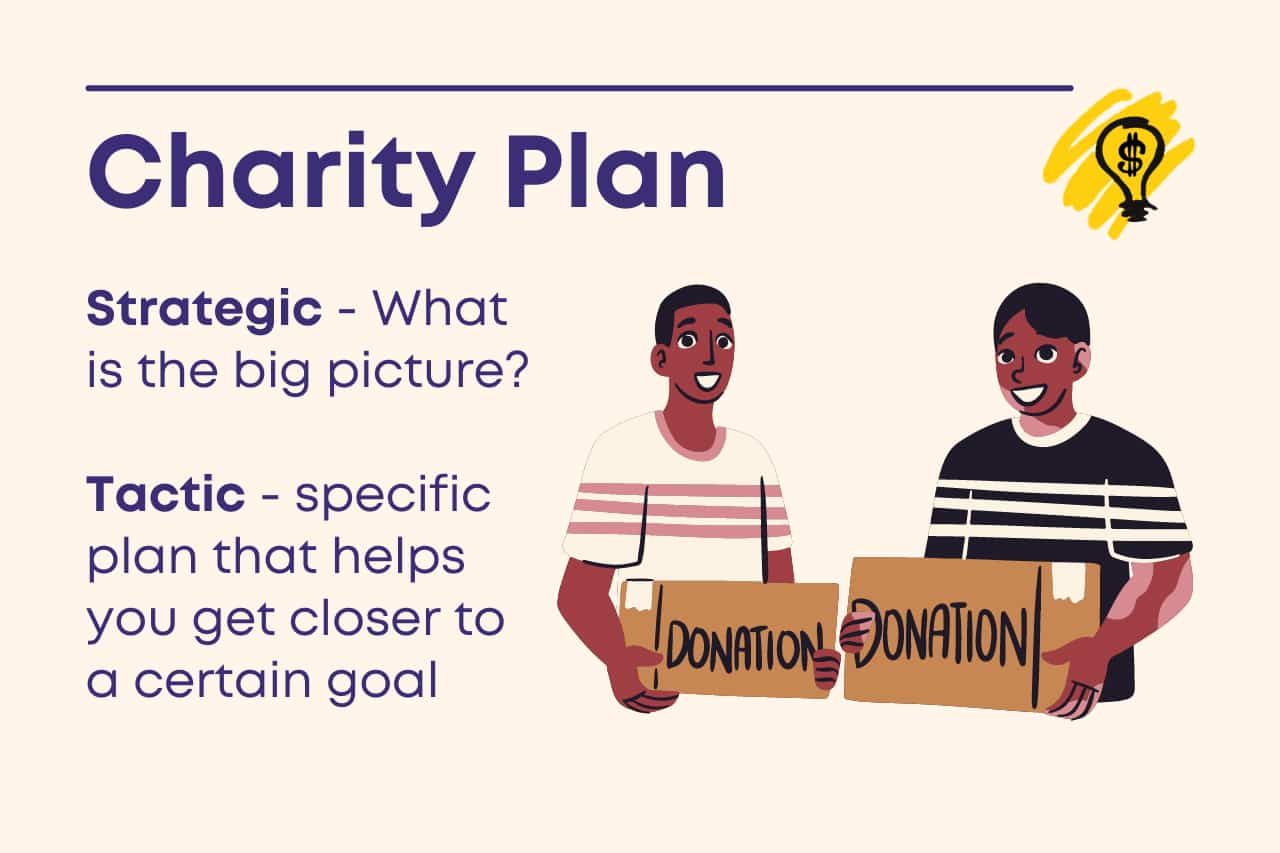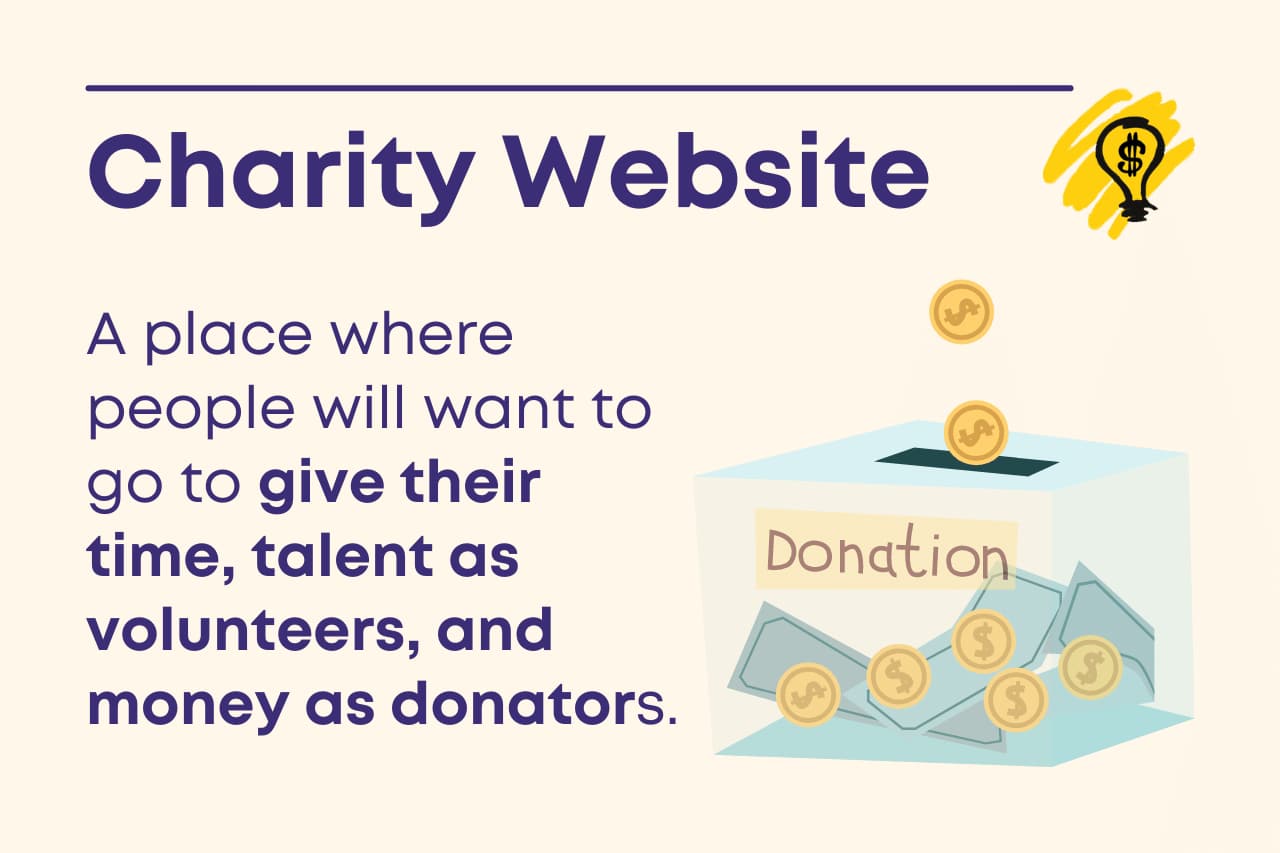As a small business owner, the ability to help others is a great way to give back. A charity that helps those in need is a great way to give back to the community and gain some goodwill. But how can you start a charity?
If you want to help people, you should consider starting your own charity.
You don’t need a lot of money to start a charity, but you do need a clear understanding of your motives and a plan for what you’ll do next.
When it comes to starting a charity, there are many ways it can be done. But if you want your charity to be effective and successful, there are nine steps that you should take. This is the complete guide to starting a charity.
What is a Charity?
A charity, or a charitable organization, is a group that is involved in improving the lives of others or an organization that raises money or provides services like help and assistance to people that need it.
Thousands of charities worldwide provide services such as housing, food, clothing, education, disaster relief, research and development, health care, conservation, etc.
Even though they are similar, there is still a difference between charity and nonprofit organizations. A nonprofit organization uses its profits for its primary goal to support the specific mission. Nonprofits can be charities, educational institutions, political organizations, and government agencies. So, a charity is a specific type of nonprofit organization that aims to improve communities’ lives.
What type of charity would you like to start?
To start a charity organization, you must know what type of charity you want. There are many different ways to make a positive impact on society and the world. By understanding your motivation and the type of impact you want to make, you’ll have a better idea of where to focus your efforts. When you decide on your ultimate goal, it will become easier to determine what type of charity you want to start.

Think about the following questions to be able narrow down possible charity types you would like to engage with:
- Do you want to be engaged with a specific charity type?
- Are the needs of those you wish to help already being met?
- Will this charity be able to grow and develop in the future?
- Is this charity going to have a lasting impact on the lives of those in need?
Now, let’s start with a step-by-step approach to how to start a charity.
Related: Why Nonprofit Organizations Should Work with Lobbying Firms
1. Develop a mission and vision statement before you start a charity
Whether you’re starting a charity or nonprofit, it is absolutely crucial that you develop a clear mission and vision statement to help guide your organization and set your course. You can either write your own mission and vision or find inspiration from an existing mission and vision statement and create one for your charity.
Vision statement
A vision refers to how your organization will look into the future. Your vision should include descriptions of what you want to create, the values, beliefs, and desired future state of your charity, not quantitative measures.
A vision statement is simply the overall direction you’d like your charity to head towards. It’s the “why” behind the whole operation. Having a vision statement in place will guide every decision you make. Your vision statement should answer two questions:
- What are we trying to achieve with our charity? and
- Who are we trying to achieve it for?
Mission statement
Mission refers to concrete descriptions of objectives and purpose.
When creating a mission statement, you should complement it with achievable, specific, and precise goals. Moreover, you need a set of values that will lead your organization. Also, you need to think about the following questions:
- How well does this mission statement align with the charity’s core values?
- How does this mission statement communicate with the public?
- Does this mission statement help the organization accomplish its goals?
The key is that your mission and vision should communicate your organization’s purpose and values to the world. The mission and vision statement should be short but comprehensive and concise. According to experienced charity workers from MERS Goodwill, just a simple motto, like their slogan, “Changing lives through the power of work,” and a short explanation will do the work.
Related: 30 Mission Statement Examples to Kickstart Your Business Journey + Templates
2. Create a name
By design, charities are organizations that require philanthropy as a means of support. The name that you select can describe what your charity does; however, the most successful charities are named after the people who inspired them. If you name your organization in memory of a person, people might feel compelled to donate.
It doesn’t have to be perfect. It just needs to catch the attention of people who want to help you raise money. The name is your first impression and the first words that people hear when they see your organization’s name. The name is also the first thing people will consider when calling your organization. And if they don’t think about your charity again, the chances are that they’ll forget about the donation you asked for.
You can start with a word or short phrase describing your charity’s purpose. This part of the process aims to identify what your organization stands for and what it does. Choose words that you believe describe the impact your charity has on people.
Do some research. Look up charities that share your values. Then, brainstorm a catchy name for your charity. Consider how you’d like people to think about your cause when they hear your charity’s name. Be sure to clearly describe what your charity is trying to accomplish.
3. Differentiate your charity
Many charities compete with each other for funds, even if they are for the same cause. To avoid this, you should differentiate your charity from others. Hopefully, this will stimulate some passion in donors and encourage them to donate.
Differentiating your charity or nonprofit from its competition is a great way to ensure that donors make their decisions based on the most valuable aspects of your organization. The key here is to focus on what sets your charity apart and why it deserves donations.
How to differentiate your new charity?
Here are three important steps you need to take to differentiate your charity:
- Design a powerful logo
We all understand the power of a logo. We often see logos used in every possible context on every imaginable medium. But have you ever considered the power of a unique charity or nonprofit logo? A charity logo communicates your charity’s values to everyone who sees it and is meant to create a lasting impression.
- Increase brand recognition
To increase brand recognition, create differentiation and promote credibility for a specific charity, consider asking questions about the charity that people wouldn’t usually ask. By offering something unique, however, your charity is more likely to stand out. You can look at other organizations that are doing what you want to do and find ways to improve on their ideas.
- Type of impact you want to make
To differentiate your charity, you’ll need to consider the impact you want to make with donations. Is it to educate people about a particular issue, to help build a new program, or maybe raise funds for a specific cause? When thinking about the goals you want to achieve with your charity, make sure you are aware of the goals of your potential donors. Are they trying to give back to a cause they feel passionate about?
4. Come up with a plan before you start a charity
Your vision, mission, and name are parts of your plan. However, you also need to lay out a 5-year plan of tactics and strategies, including operational and fundraising strategies.
Start with a plan. Don’t just randomly brainstorm ideas. Your plan will need some more specific steps involved. When it comes to creating a plan, there are two kinds of plans that you can use. The first is a strategic charity plan, which is a more general plan that covers the big picture goals, whereas a tactical plan is a specific plan that helps you get closer to a certain goal.

You need to know where you want to go before you can get there. Don’t forget the details. A charity is not a business or an organization; it is an organization with a cause. If you are starting a charity, you will need to start thinking about how you will make the charity successful. There are three things you need to think about:
1. Fundraising and donation plan to start a charity.
Now, the question is how to start a charity fundraiser.
You must ensure that your charity is raising funds, not just taking in donations. Donating to a charity is one thing; raising money for the charity is another. If you are going to ask people to donate, make sure you give them something of value in return. This will help build trust and goodwill with those who donate.
2. Marketing plan for your charity.
One of the simplest ways to get attention is to just do something. Something simple that involves people. I’ve learned that anything that gets a few thousand eyeballs on a single message can go viral. That’s why all the charities have tried this method at some point. They’ll put out a message about their cause, tell a story, and make a request. It’s amazing how this can work.
3. Charity’s staffing plan.
Without people who will work and help to achieve your charity’s mission, you can not accept the success. Your plan will need to cover these important things about the charity’s staffing:
- How many full-time staff members you will have, and what will be their roles?
- How many part-time employees you will have, and what will be their roles?
- What parts of the work will be done through volunteering?
- How will we recruit, train and retain volunteers?
5. Register a 501 {c} (3) to Start a Charity
The next step in your process of starting a charity is to register your organization as a 501{c}(3). This IRS code lets you operate as a tax-exempt organization. Make sure that you have a knowledgeable accountant or lawyer on your side to advise you about the steps you need to take to register and operate. Doing so ensures that you do not make a mistake with government rules.
To register your organization, visit the IRS website and follow their instructions. You’ll need to provide basic information (like your name and address) and your social security number. Once you’ve registered your charity, the next step is to apply for tax-exempt status with the IRS. To do this, you’ll need to provide a Form 1023 and get federal employer identification number.
6. Start a website
When you start a charity, you can use a website to announce intentions, aspirations, and plan outlines. You should also allow ways for donations and fundraising on your website. Also, you can use it to look for donations and volunteer contacts. A web presence for a charity organization can be a powerful tool to raise awareness about its mission, generate donations, and increase its social proof.
As a charity, you should put your financials and business plans on the site to demonstrate transparency. That way, people might feel obligated to donate.
A website is a form of communication. Therefore, you need to consider why people would visit your website, how you can communicate effectively, and how you can persuade them to act.

A charity website isn’t like any other website. The site must be aesthetically pleasing, user-friendly, and informative. It has to be a place where people will want to go to give their time, talent as volunteers, and money as donators. People will want to come to your site because they like what you’re trying to do and want to help you reach your goals.
7. Start fundraising
Even if you put your own funds into the charity, you will still need support from other people, including relatives and friends. However, you need broader support from private foundations and grassroots organizations. Once you plan everything, you must contact several grant-making organizations focusing on various areas.
You should be ready to make a bunch of calls and presentations. Also, you should not be discouraged if nothing comes of them because finding donors takes time and energy. You need to conduct your fundraising in a disciplined and professional manner.
One of the easiest ways to connect with potential donors is to tell a personal story. The personal story is something everyone can relate to.
Start with your family and friends. They love to support a cause they feel close to, and if you ask for help raising funds, they’ll likely jump at the chance. Once you’ve got a few people on board, start spreading the word and inviting others to join the cause.
Charity fundraising events are a fantastic way for you to network with business contacts, build your visibility in the community, and raise money for a cause. The event itself should be a great time. If you’re new to fundraising, consider doing an event, such as an auction, where people can bid on a chance to attend a dinner with the person who raises the most money.

8. Set up an advisory board
Initially, the board should include several people with considerable experience in the nonprofit business to help you with the launch. These people should be available in real-time as resources, and you could meet monthly until you establish operations. Once your charity opens its doors, expand your advisory board to include significant donors and people with fundraising contacts.
Advisors can help charities make fundraising, marketing, event planning, and board recruitment decisions, but these groups must be carefully selected to best support the mission. A nonprofit can improve its communication, marketing, and fundraising efforts by having some of the community’s best and brightest people who will provide guidance and advice.
Just be careful not to let your board become too big. Moreover, you need to watch out for people with big egos that can ruin your charity.
9. Begin with your charity’s operations
Now, you must know how to run a charity.
You should have the money for initial capital needs and up to a year of operating funds before you commit to any outflow of cash. Using debt to start your organization is a bad idea – you must be frugal.
You need to be able to get a return on investment that exceeds your cost of capital. So sell something – it doesn’t matter what, just something. Build a network of supporters. Once you have raised enough money, you must build a network of supporters.
Conclusion
In conclusion, a charity is a nonprofit organization that provides humanitarian aid and relief to people who cannot provide for themselves. Most charities start for noble reasons – they want to make a difference. The people will give money to a charity because they feel good when they do. Here’s the truth: people give to charities because they care. We all care about the problems we face. We all want to make a difference. Charity is the perfect vehicle to make that happen.
If you want to see a difference in your community, try starting your own charity. You can create a charity that will positively impact your community and the lives of those in it. There are many ways to make a difference in your community, whether it’s a local school, a local park, or your local animal shelter. The key is to know where to start.
Charity fundraising is an area where it’s important to know where you want to go and how you’re going to get there. This way, you can use your fundraising to positively impact the community, not just make a buck.
Frequently Asked Questions
A charity is an organization that is involved in improving the lives of others or an organization that raises money or provides services like help and assistance to people that need it.
A nonprofit organization uses its profits for its primary goal to support the specific mission. A charity is a specific type of nonprofit organization that aims to improve communities’ lives.





